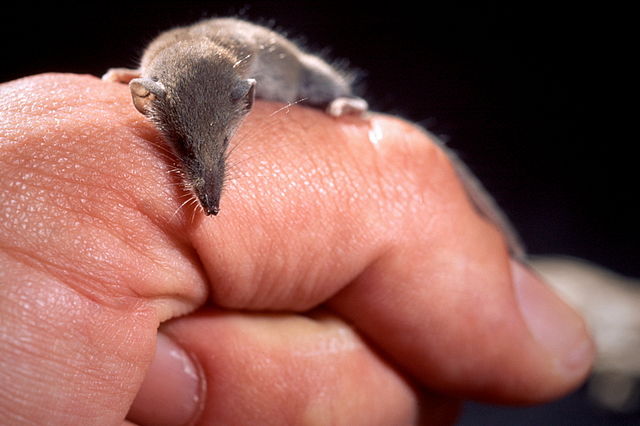Top Qs
Timeline
Chat
Perspective
Small mammal
Mammal category From Wikipedia, the free encyclopedia
Remove ads
Small mammals or micromammals are a subdivision of mammals based on their body mass and size. Different values have been used as the upper limit. The International Biological Programme has defined small mammals as species weighing up to 5 kg.[1][2][3] Alternatively, the International Union for Conservation of Nature (IUCN) groups the orders of rodents, tree shrews and eulipotyphlans (insectivores) together under the term small mammals.[4]

A significant majority of mammal species falls into the category of small mammals.[1][2] They are found in a great range of habitats and climate zones.[3]
Remove ads
Characteristics
Many small mammals have a short livespan and high fertility rate, resulting in a comparatively high variability in genetic composition. Their size leads to a reduced energy need for movement, but a high energy requirement for maintaining body temperature. This results in a high rate of food intake, using a wide range food sources. Their small size, together with frequently nocturnal or crepuscular activity, provide some protection against predators.[3]
Remove ads
List of species
This section is empty. You can help by adding to it. (November 2024) |
Eulipotyphlans
Rodents
Tree shrews
The tree shrews (family Tupaiidae) are non-rodent, primate-like animals and are classified into the order Scandentia. They are subdivided into two subfamilies: the diurnal subfamily Tupaiinae with five genera (Tupaia, Anathana, Dendrogale, Lyonogale, Urogale) and the nocturnal subfamily Ptilocercinae with a single genus, pen-tailed tree shrew Ptilocercus
Remove ads
Research and conservation
The SSC Small Mammal Specialist Group (SMSG) of the IUCN "serves as the global authority on the world's small mammals" both with regard to research as well as conservation efforts.[5]
References
Wikiwand - on
Seamless Wikipedia browsing. On steroids.
Remove ads
